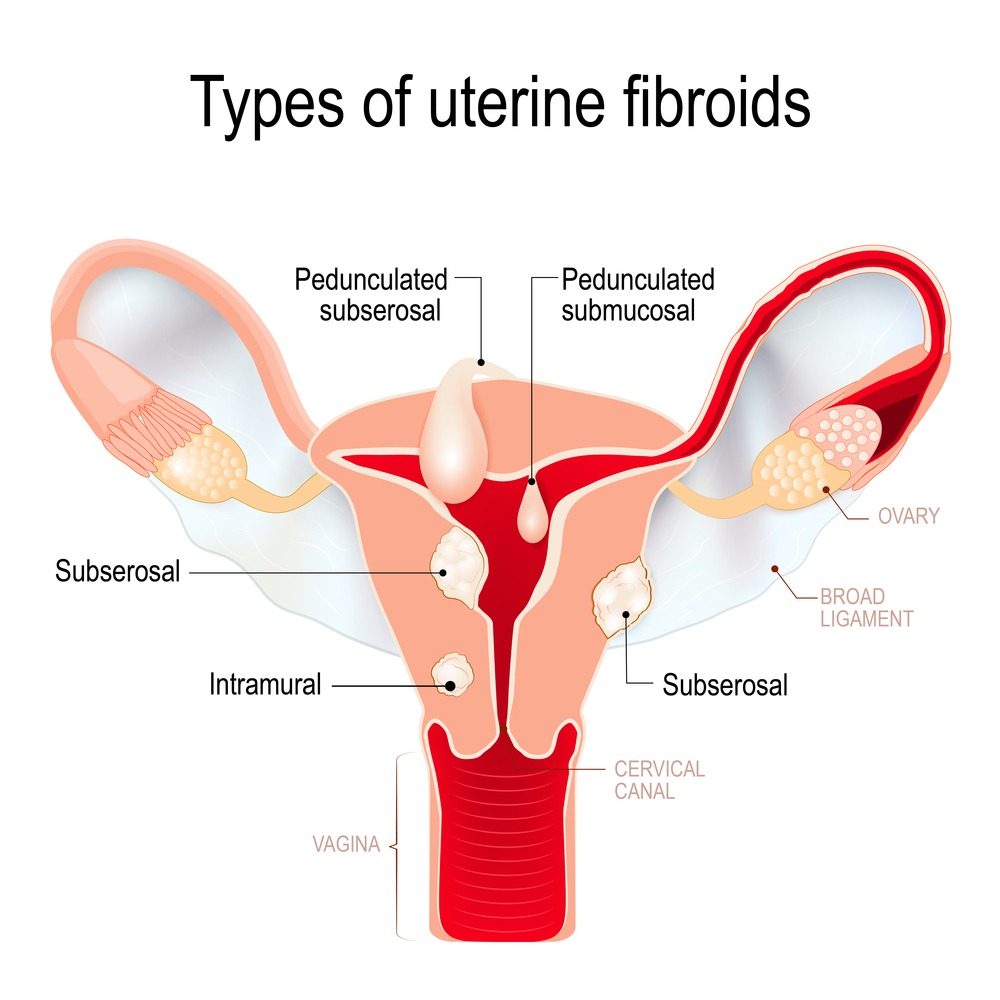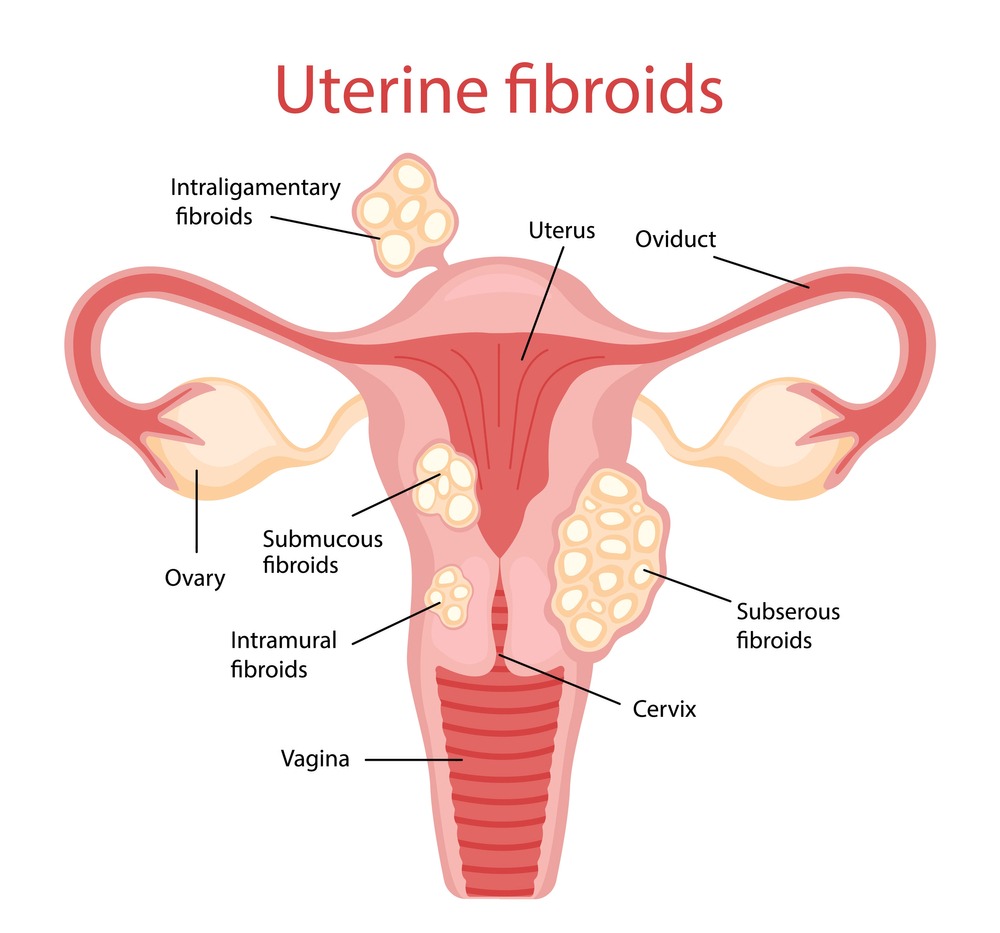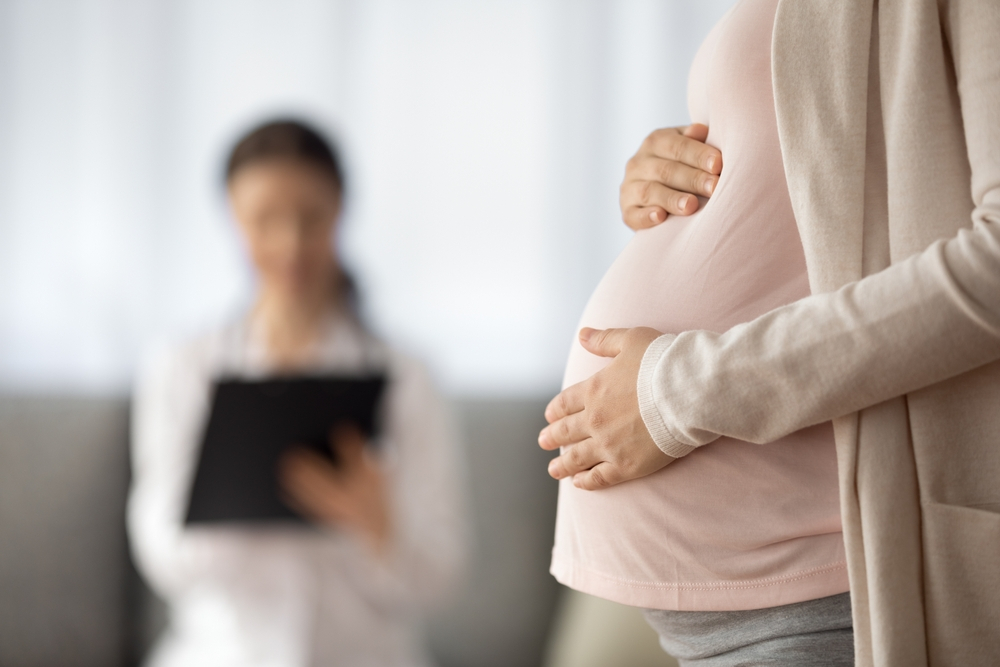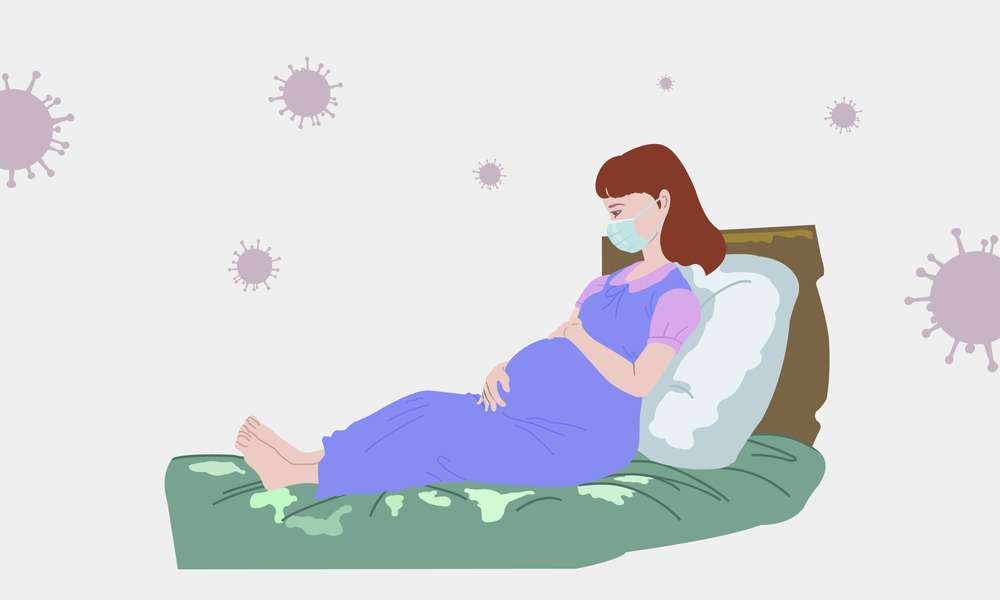Fibroids
Introduction:
Fibroids are uterine growths that are benign (non-cancerous). They are also called uterine fibroids or leiomyomas and are quite common in women of childbearing age. While many women have fibroids without realizing it, others may experience symptoms that can impact their daily lives. In this article, we delve into the world of fibroids and discuss their causes, symptoms and treatment options.
What are fibroids?
Fibroids are abnormal growths that form in the uterus, particularly in smooth muscle tissue. Their size varies from the size of a seed to the size of a grapefruit. Fibroids can develop as single growths or in groups. Possible causes Although the exact cause of fibroids is not yet clear, several factors can influence their formation:
- Hormonal imbalance: Estrogen and progesterone, two hormones involved in regulating the menstrual cycle, appear to play a role in the growth of fibroids.
- Genetic predisposition:There may be a genetic component that increases the likelihood of developing fibroids.
- Hormone Disrupting Chemicals:Exposure to some environmental chemicals, such as pesticides, may contribute to the development of fibroids.
Identification of symptoms:
Although some women with fibroids have no symptoms, others may experience: Heavy, prolonged menstrual bleeding: Fibroids can cause excessive menstrual bleeding, which can sometimes lead to anemia.
- Pain and pressure in the pelvis:Large fibroids can cause discomfort or a feeling of pressure in the pelvic area. Urinary and bowel problems: Fibroids that put pressure on the bladder or rectum can cause frequent urination, constipation, or difficulty emptying the bladder.
- Reproductive Problems: Fibroids can affect fertility, cause recurrent miscarriages, or lead to complications during pregnancy and childbirth.Diagnostic Tests To determine the presence of fibroids and their characteristics, doctors may perform various diagnostic tests, including:
- Ultrasound:This imaging technique uses sound waves to create images of the uterus and fibroids.
- MRI (Magnetic Resonance Imaging): MRI provides detailed images of the uterus and helps the doctor assess the size and location of fibroids.
- Hysteroscopy:A thin, lighted tube called a hysteroscope is used to examine the uterus for abnormalities.
- Endometrial biopsy:During this procedure, a small sample of the lining of the womb (endometrium) is taken for further examination.
Fibriods Treatment:
The size, location, and number of uterine fibroids will all affect how they are treated. the fibroids, the severity of symptoms, and the patient’s reproductive goals and general health. Treatment options for fibroids may include watchful waiting or surgery. Some common treatment options:
- Keeping an eye out: If the fibroids are small and do not produce symptoms, your doctor may advise you not to treat them and instead monitor their development with regular tests. In many cases, fibroids may shrink or become less symptomatic after menopause.
- Medications or Pain relievers: Over-the-counter pain relievers such as ibuprofen can help relieve the pain and discomfort associated with fibroids.
- Hormone therapy: Birth control pills, hormonal IUDs, and other hormone based medications can help control heavy menstrual bleeding and relieve other symptoms.
- Gonadotropin-releasing hormone (GnRH) agonists: By preventing the production of estrogen and progesterone, these drugs can temporarily reduce fibroids, but are usually used for short-term relief due to side effects and possible problems with bone density.
- Minimally invasive procedures or Uterine artery embolization (UAE): A minimally invasive procedure that blocks the blood supply to the fibroids, causing them to shrink.
- Myomectomy: Through this surgical process, fibroids are removed without harming the uterus. This is a suitable option for women who want to preserve their fertility.
- Hysteroscopic myomectomy: This procedure is performed through the cervix and removes submucosal fibroids located in the uterine cavity.
- Deaths Laparoscopic or robotic myomectomy: These minimally invasive surgical methods remove fibroids through small incisions in the abdomen.
- Endometrial ablation: This procedure destroys the lining of the uterus and can be effective in treating heavy menstrual bleeding caused by small fibroids.
- Focused Ultrasound Surgery (FUS): This non-invasive procedure uses high-intensity ultrasound waves to destroy fibroids.
- Hysterectomy: In cases where fibroids are severe and cause debilitating symptoms, or when other treatments are not effective or appropriate, a hysterectomy may be recommended.This involves removing the entire uterus and is the permanent solution to fibroid, but also results in loss of fertility.
Note:
The choice of treatment depends on various factors, including the patient’s age, desire for a future pregnancy, the location and size of the fibroids, and the severity of symptoms. It is important to discuss your options with your doctor as he or she can help you determine the most appropriate treatment plan for your specific situation.
What Causes Fibroids:
The exact cause of uterine fibroids is not fully known, but several factors are believed to influence their development. These factors may include:
- Genetic predisposition: There is evidence that a family history of fibroids may increase a woman’s risk of developing fibroid. Genetic factors may play a role in susceptibility to fibroids.
- Hormones: Estrogen and progesterone, two hormones that regulate the menstrual cycle and are involved in the growth of the uterine lining, can promote the growth of fibroids. This is supported by the fact that fibroids tend to grow during the reproductive years when these hormones are at their highest.Additionally, fibroids often shrink and may become less symptomatic after menopause when hormone levels decline.
- Hormonal Imbalance: Conditions that cause hormonal imbalance, such as polycystic ovary syndrome (PCOS), can increase the risk of developing fibroids.
- Race and ethnicity: Fibroids are more common in some racial and ethnic groups, with African American women having a higher risk of developing fibroids and experiencing more severe symptoms than women of other ethnicities.
- Age: The risk of developing fibroids increases with age, with most women experiencing symptoms between the ages of 30 and 40. Following menopause, fibroids frequently decrease.
- Diet and lifestyle: Some research suggests that dietary factors, including consumption of red meat and alcohol and a lack of fruits and vegetables in the diet, may be associated with a higher risk of fibroids. Obesity is also associated with an increased risk of fibroids.
- Uterine growth factors: Some substances that stimulate cell growth in the uterus can contribute to the development of fibroids.
Note:
It is important to note that although these factors are associated with an increased risk of fibroids, they are not a guarantee that a woman will develop fibroids. Many women with one or more of these risk factors do not develop fibroid, and the exact cause can vary from person to person.If you are concerned about fibroids or experiencing associated symptoms, it is important to see your doctor for a proper diagnosis and to discuss treatment options. The appropriate treatment depends on the size, location and severity of the fibroids, as well as your individual health and reproductive goals.
Fibroids Symptoms:
Myomas, also called uterine leiomyomas, are benign tumors that develop in the uterus. These growths can vary in size and affect women of all ages. While some women may not experience any symptoms, others may experience a range of symptoms that can significantly impact their quality of life. In this article, we look at the different symptoms associated with uterine fibroids and discuss how they can be treated.
Heavy and longer periods:
- Bleeding: One of the most common symptoms of fibroids is heavy, prolonged menstrual bleeding, called menorrhagia.Women with fibroids may experience excessively long periods, lasting more than a week. Heavy blood flow can result in the need to change pads or tampons frequently, causing inconvenience and discomfort. This symptom can also lead to anemia due to blood loss, which can further contribute to fatigue and weakness.
- Pain and pressure in the pelvis:Fibroids can cause pain and pressure in the pelvis, especially if they put pressure on other organs in the pelvic area. Some women may feel a dull ache or cramping in the lower abdomen, while others may feel a sharp, stabbing pain.The pressure from fibroids can also cause a feeling of fullness or swelling in the pelvis, which can be very uncomfortable.
- Urinary Symptoms: Fibroids can put pressure on the bladder and cause urinary problems. Some women may experience frequent urination, an urgency to urinate, or a feeling that their bladder is not completely empty. In severe cases, fibroids can even block the flow of urine, causing difficulty urinating. These urinary problems can significantly interfere with daily activities and affect overall well-being.
- Intestinal symptoms: As with the bladder, fibroids can also affect the intestines due to their proximity. In rare cases, women with fibroids may experience constipation, difficulty passing stools, and even intestinal obstruction. These symptoms can cause anxiety and interfere with the normal functioning of the gastrointestinal system.
- Abdominal Hypertrophy:Large or multiple fibroids can cause enlargement of the abdomen and give the appearance of pregnancy or weight gain. For many women, this can be a source of physical and emotional discomfort.Increasing belly size can also make it difficult to find appropriate clothing or perform activities that require full range of motion.
- Infertility and pregnancy Complications: In some cases, fibroids can affect fertility and pregnancy. Fibroids that distort the uterine cavity or block the fallopian tubes can make pregnancy difficult. In addition, fibroids can increase the risk of complications during pregnancy, such as: B. a miscarriage, a premature birth or the need for a cesarean section. For women who are planning to become pregnant or are already pregnant, it is important to discuss existing fibroids with their doctor.
Uterine Fibroids:
Leiomyomas or fibroids, often known as uterine fibroids, are benign uterine growths that frequently develop throughout the reproductive years.They are composed of muscle cells and other tissues and can range in size from small, seed-like growths to large, bulky masses. Here are some important points about uterine fibroids:
- Occurrence: Uterine fibroids are common and many women can suffer from them without symptoms. The exact cause of fibroids is unknown, but genetic factors and hormones appear to play a role in their development.
- Symptoms: Many fibroids afflicted women exhibit no symptoms.However, when this occurs, symptoms may include heavy menstrual bleeding, prolonged periods, pain and pressure in the pelvic area, frequent urination, constipation, and back pain.
- Diagnosis: Fibroids are often discovered during a routine gynecological exam or prenatal ultrasound. Other imaging tests such as ultrasound, MRI, or hysteroscopy may be used to confirm the diagnosis and determine the size and location of the fibroids.
- Treatment: The appropriate treatment for uterine fibroids depends on the size, location, and severity of symptoms. Treatment options include:
- Watchful waiting: If the fibroids are small and not causing symptoms, your doctor may recommend monitoring without intervention.
- Medications: Hormonal medications such as birth control pills or GnRH agonists can help control symptoms such as heavy bleeding and pelvic pain.
- Minimally Invasive Procedures: Procedures such as uterine artery embolization, myomectomy, and endometrial ablation can be used to reduce or eliminate fibroid while preserving the uterus.
- Hysterectomy: In severe cases or when other treatments are ineffective, a hysterectomy, in which the entire uterus is removed, may be recommended.
- Complications: Uterine fibroids are generally noncancerous, but they can cause complications including fertility problems, recurrent miscarriages, and pregnancy complications.
- Prevention: Although uterine fibroids cannot be completely prevented, a healthy lifestyle, weight control, and regular exercise can help reduce the risk.
- If you think you have uterine fibroids or are experiencing symptoms, be sure to see your doctor. The appropriate treatment depends on your individual situation and your medical history.
Uterine Fibroids Symptoms:
The size and location of uterine fibroid can vary greatly, and many women with fibroid have no symptoms. However, when symptoms do occur, they can be varied, ranging from mild to severe. Uterine fibroids’ most typical signs and symptoms include:
- Heavy menstrual bleeding (menorrhagia): This is one of the most common symptoms. Women with fibroids may have heavy or prolonged periods, sometimes causing anemia (low red blood cell count) and fatigue.
- Pelvic Pain and Pressure: Fibroids can cause a feeling of fullness or pressure in the lower abdomen.Some women describe it as a feeling of heaviness or pressure in the pelvic area.
- Pelvic pain or discomfort: The pain can range from dull and aching to sharp and intense. The pain may also radiate to the lower back and thighs.
- Frequent urination: Large fibroids that press on the bladder can cause more frequent urination or the feeling of having to urinate more often.
- Difficulty emptying the bladder: In some cases, the pressure of the fibroids on the bladder can make it difficult to empty completely.
- Constipation or difficulty passing stool: Fibroids that press on the rectum can cause constipation or make it difficult to pass stool.
- Pain during intercourse: Large fibroids or fibroids that are located near the surface of the uterine wall can cause pain or discomfort during intercourse.
- Back or leg pain: Fibroids can put pressure on nerves and cause back or leg pain.
- Abdominal enlargement or uterine enlargement: In some cases, fibroids can cause enlargement of the uterus, resulting in a noticeable increase in abdominal circumference.
- Infertility or recurrent miscarriages: Fibroids can affect fertility by blocking the fallopian tubes or changing the shape of the uterine cavity.They may also make miscarriage more likely.
Note:
Keep in mind that not all women with fibroids experience these symptoms and that the severity of symptoms can vary greatly. Some women may have multiple fibroids, while others may only have one. The size and location of fibroid can also influence the type and intensity of symptoms.If you think you have uterine fibroids or notice any of these symptoms, be sure to see your doctor for a proper diagnosis and to discuss treatment options, especially if your symptoms are affecting your quality of life or fertility.
Conclusion:
Fibroids, though common, can significantly impact a woman’s quality of life when symptomatic. It is essential to be aware of the potential signs and seek medical attention if any symptoms arise. With advancements in diagnostic techniques and various treatment options available, women can find relief from the discomfort and potential complications associated with fibroids. Always consult with a healthcare provider for an accurate diagnosis and personalized treatment plan.





